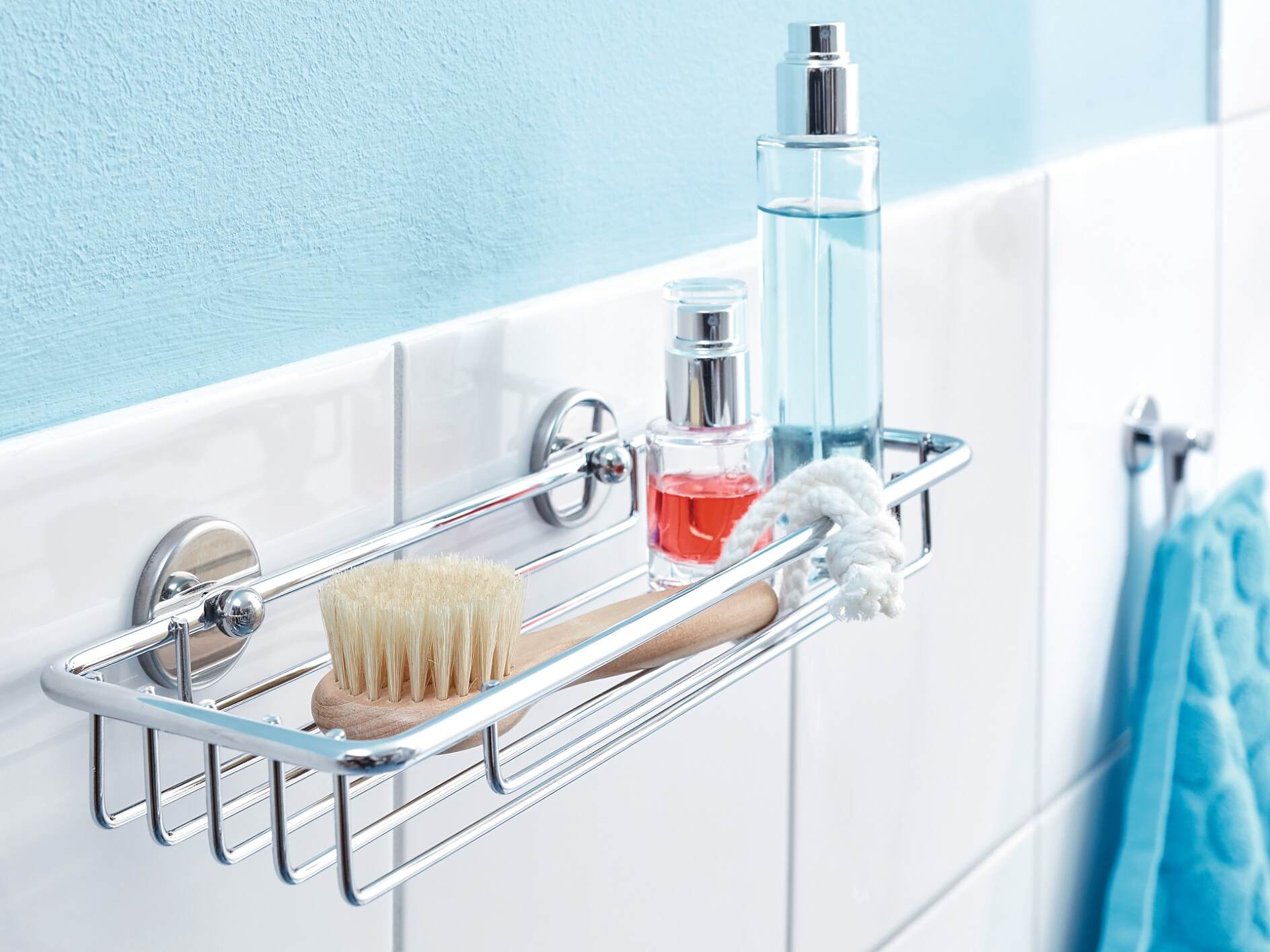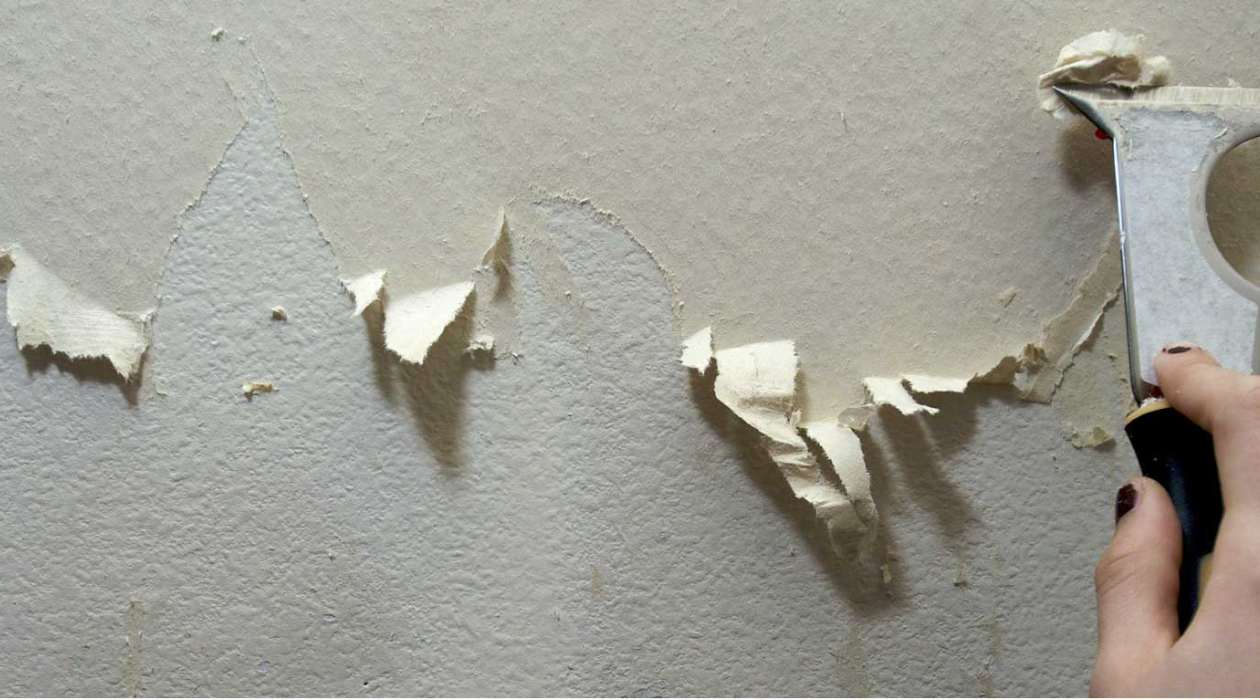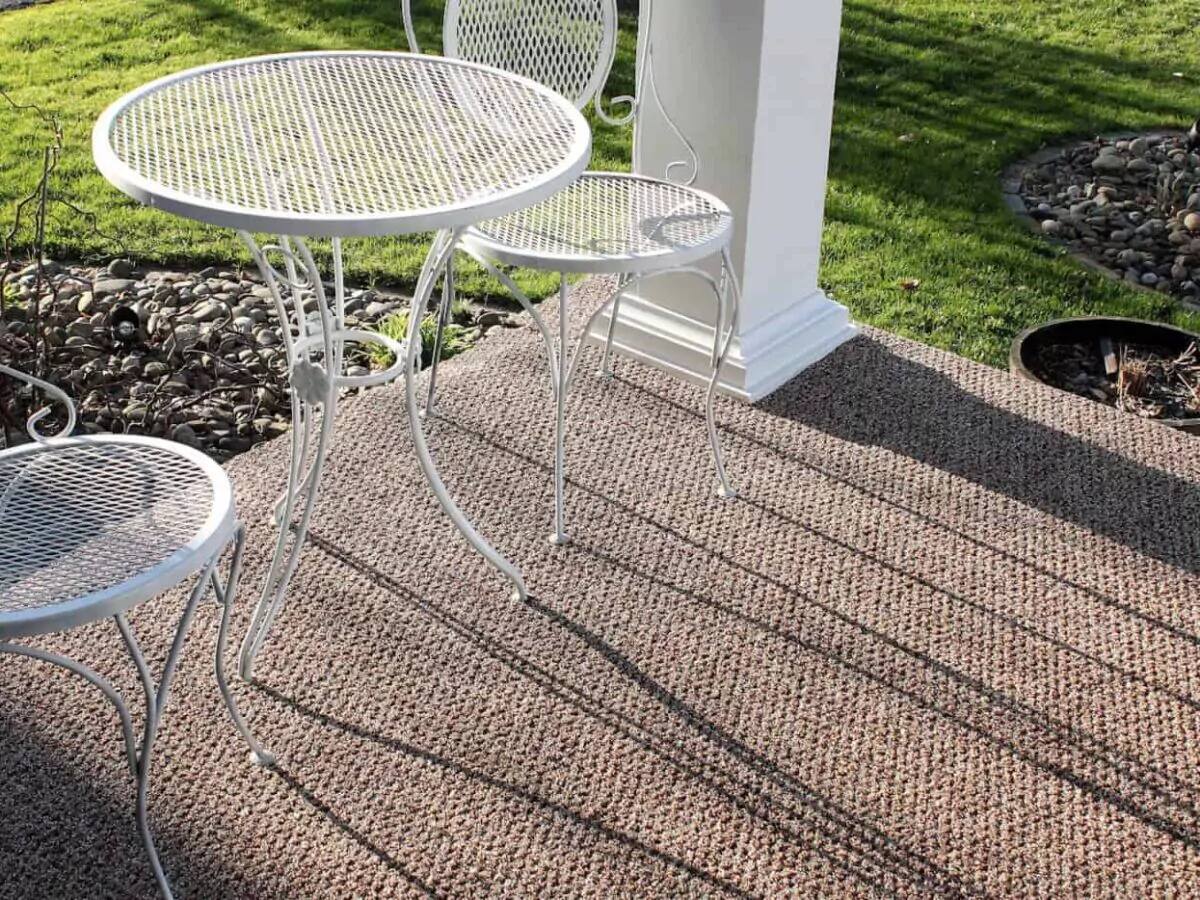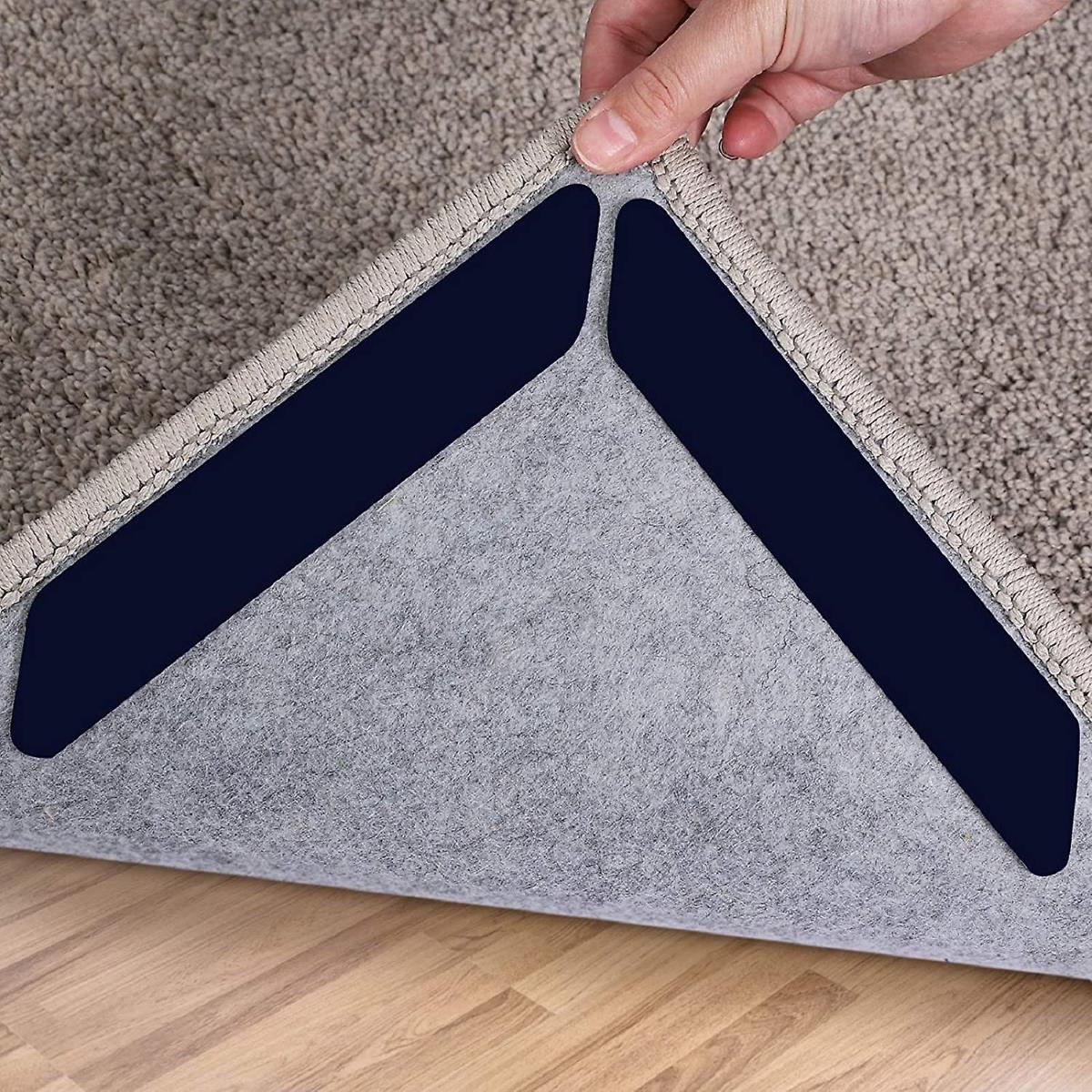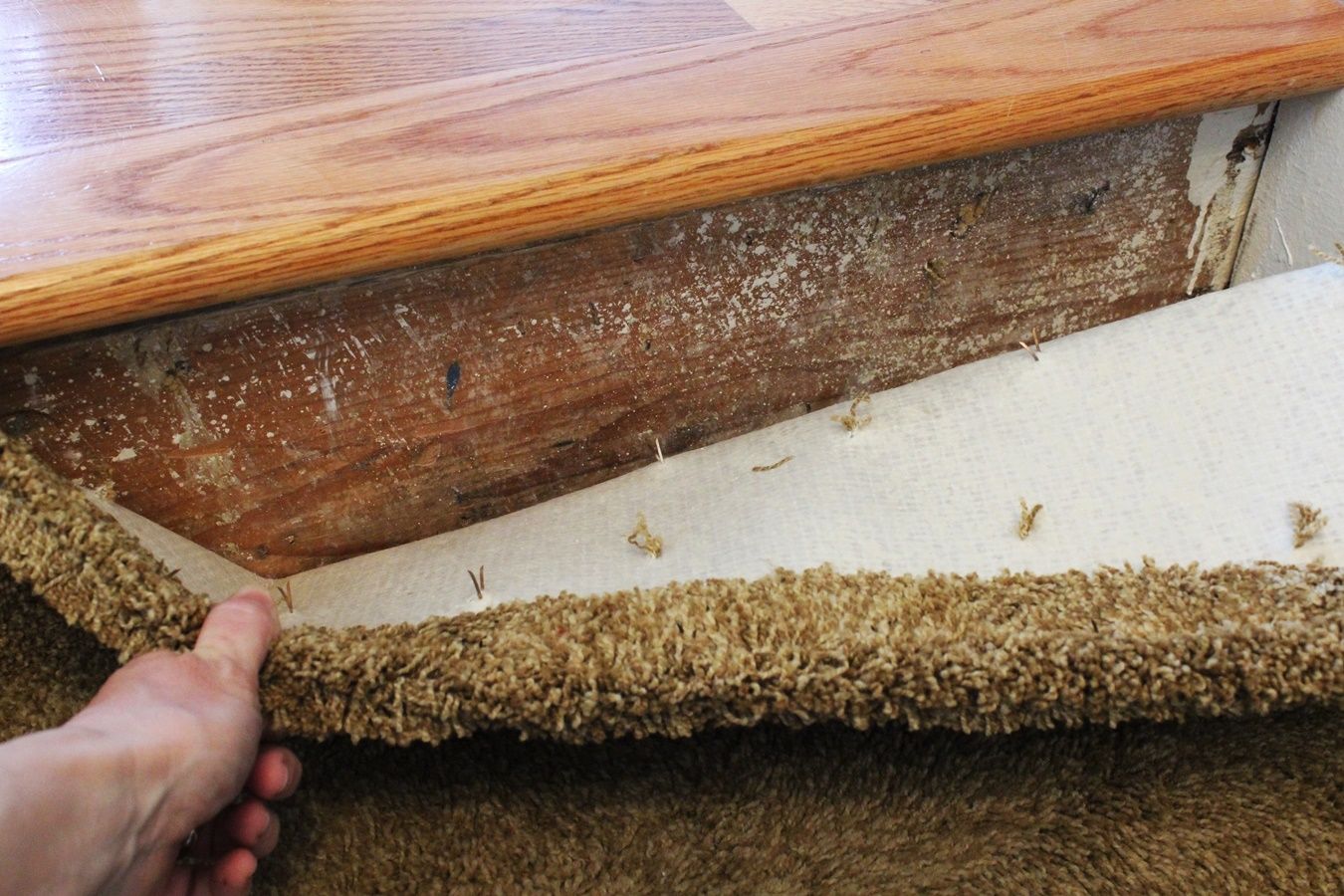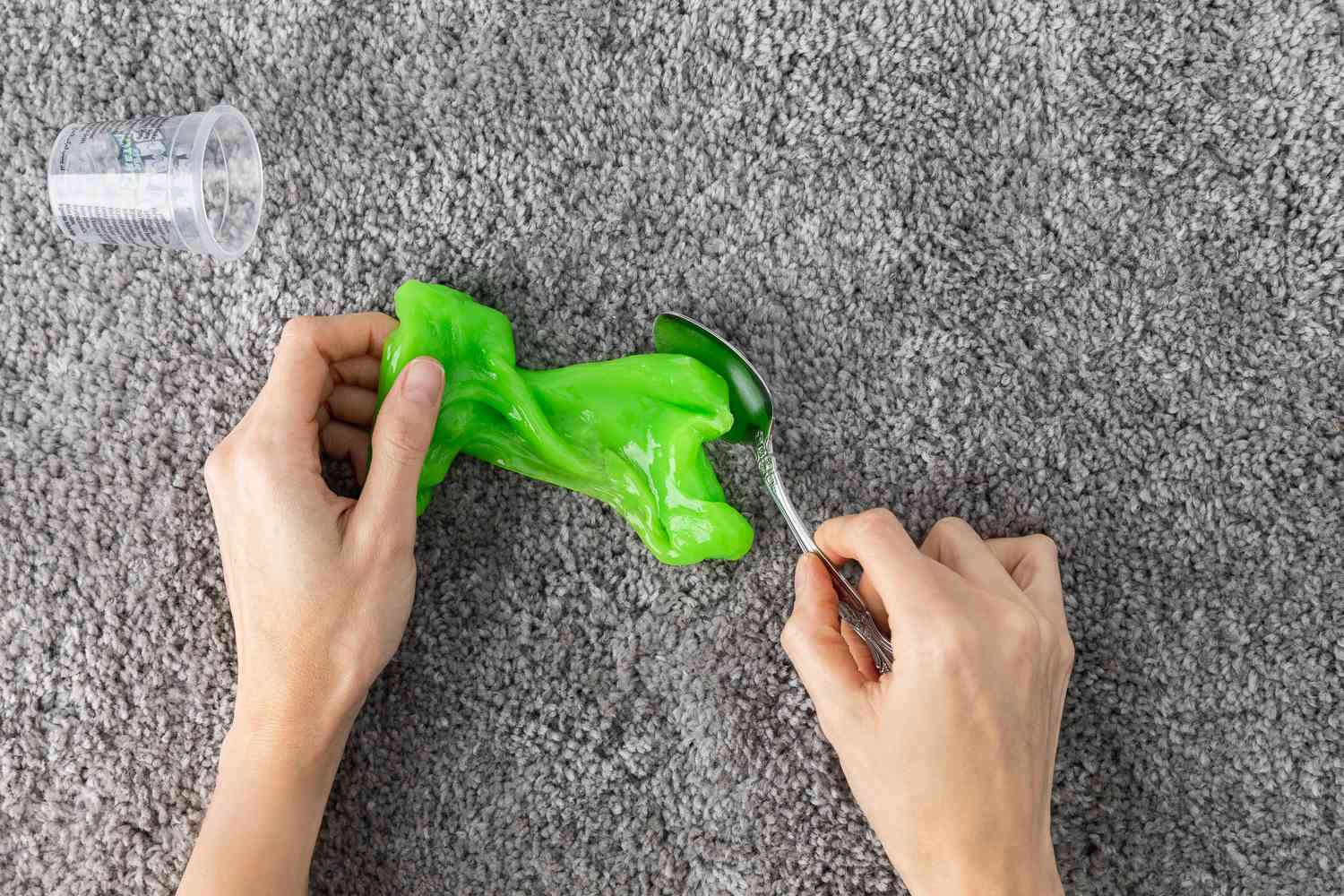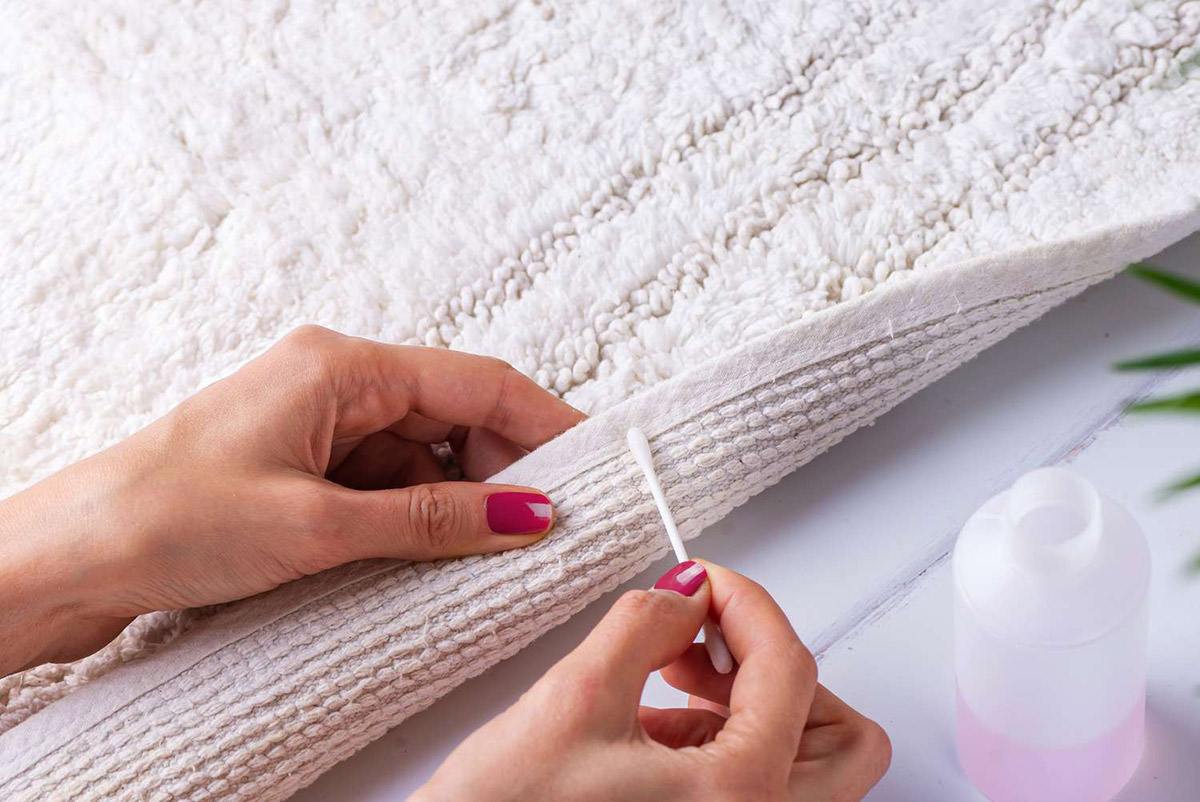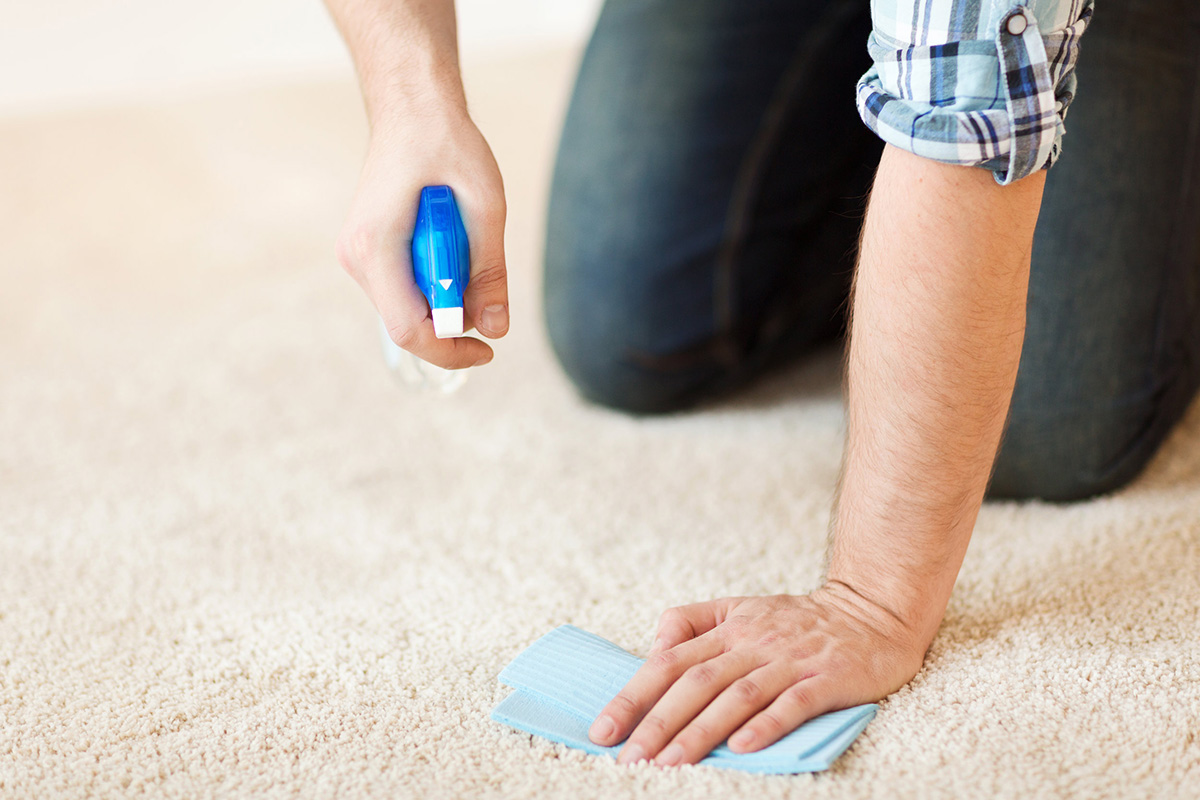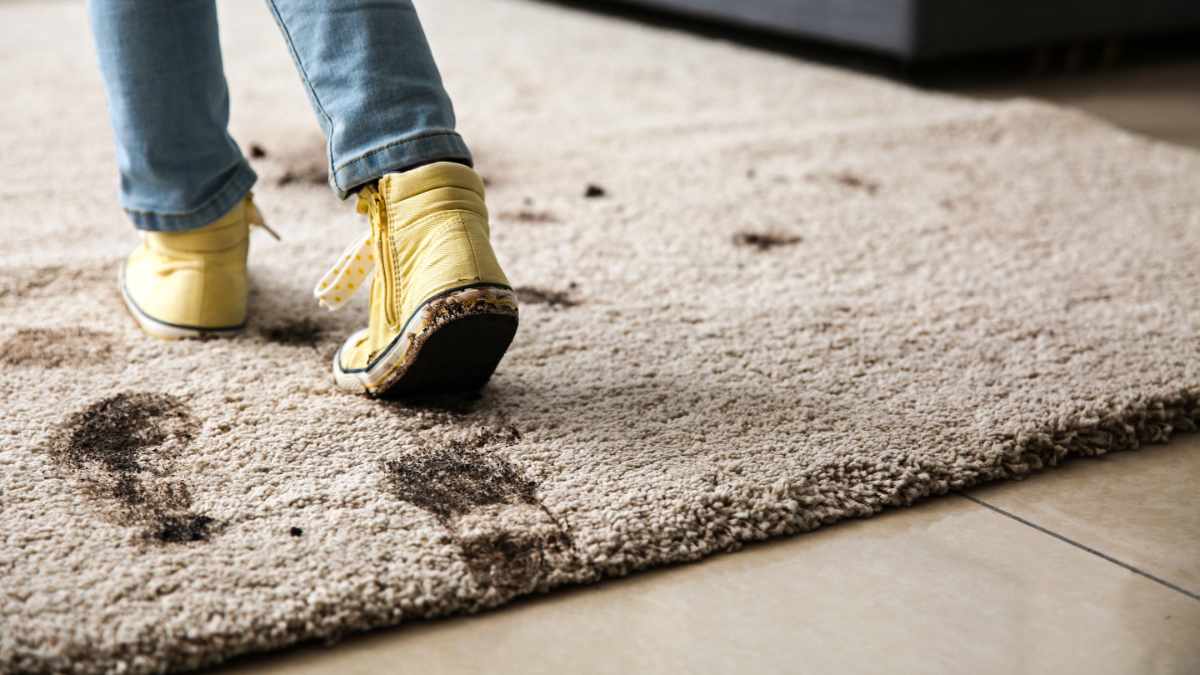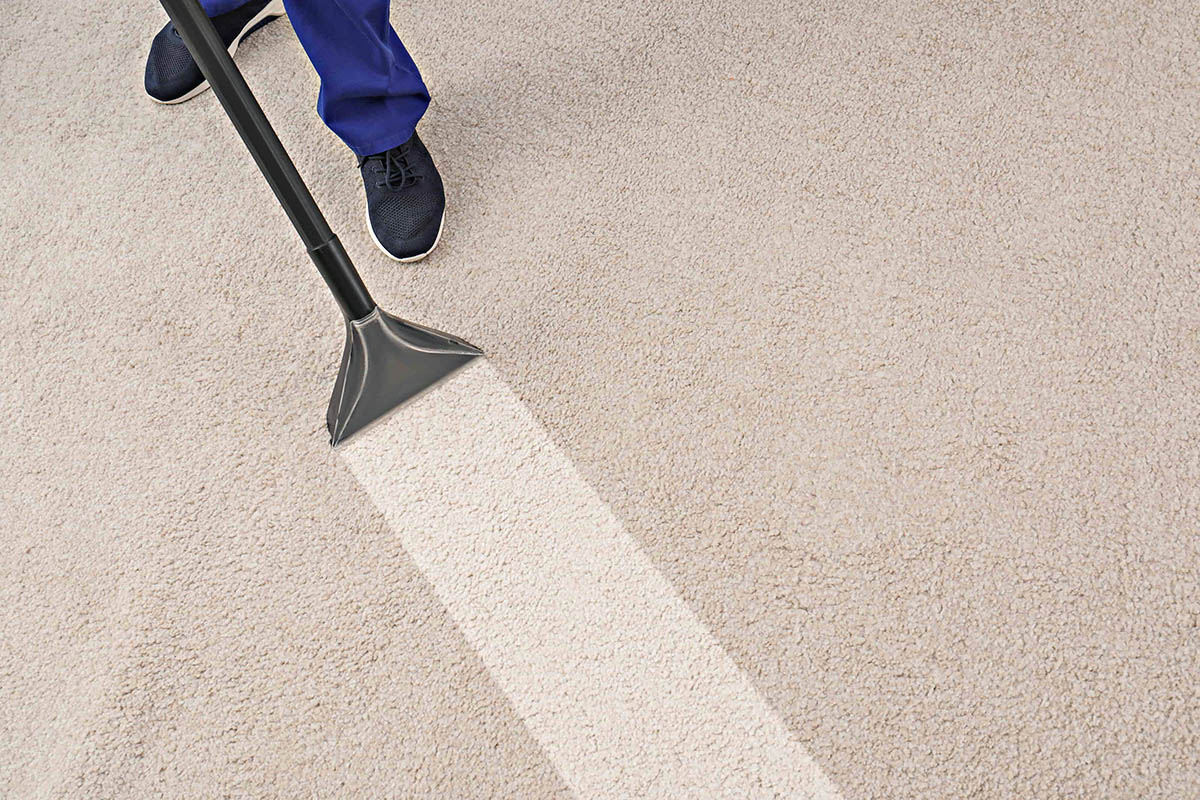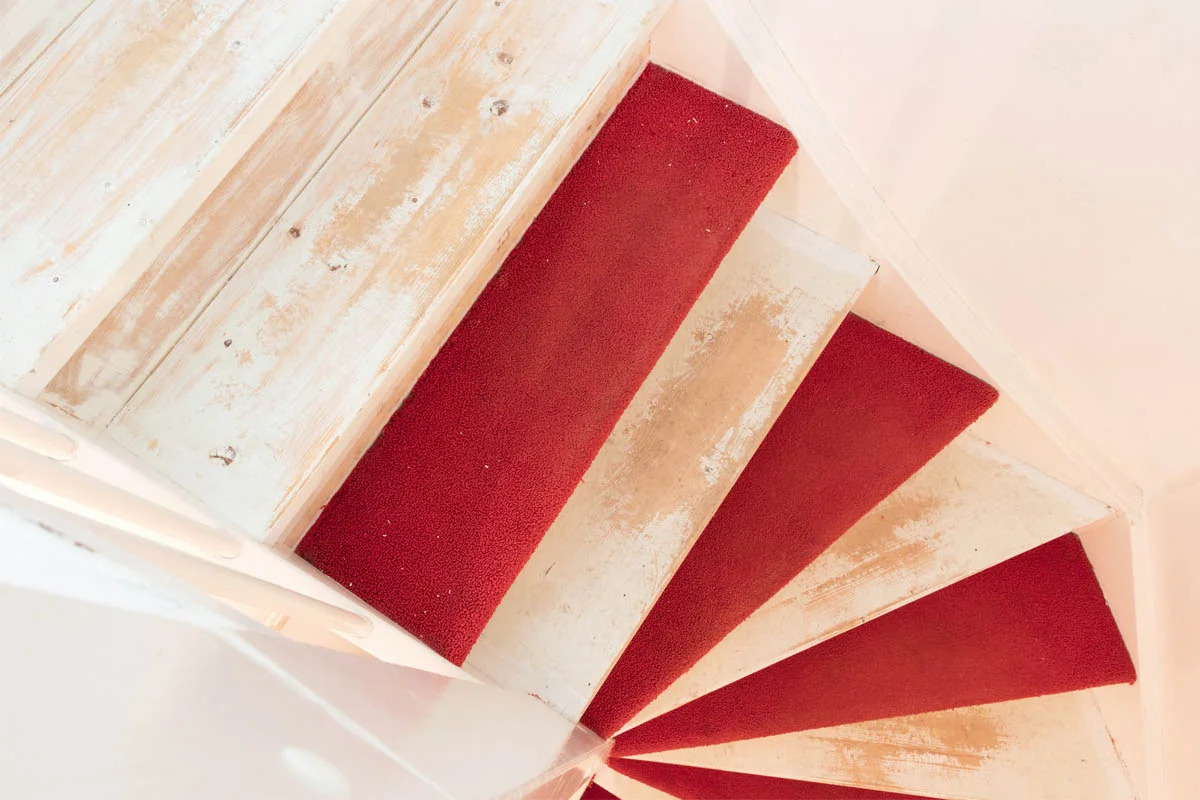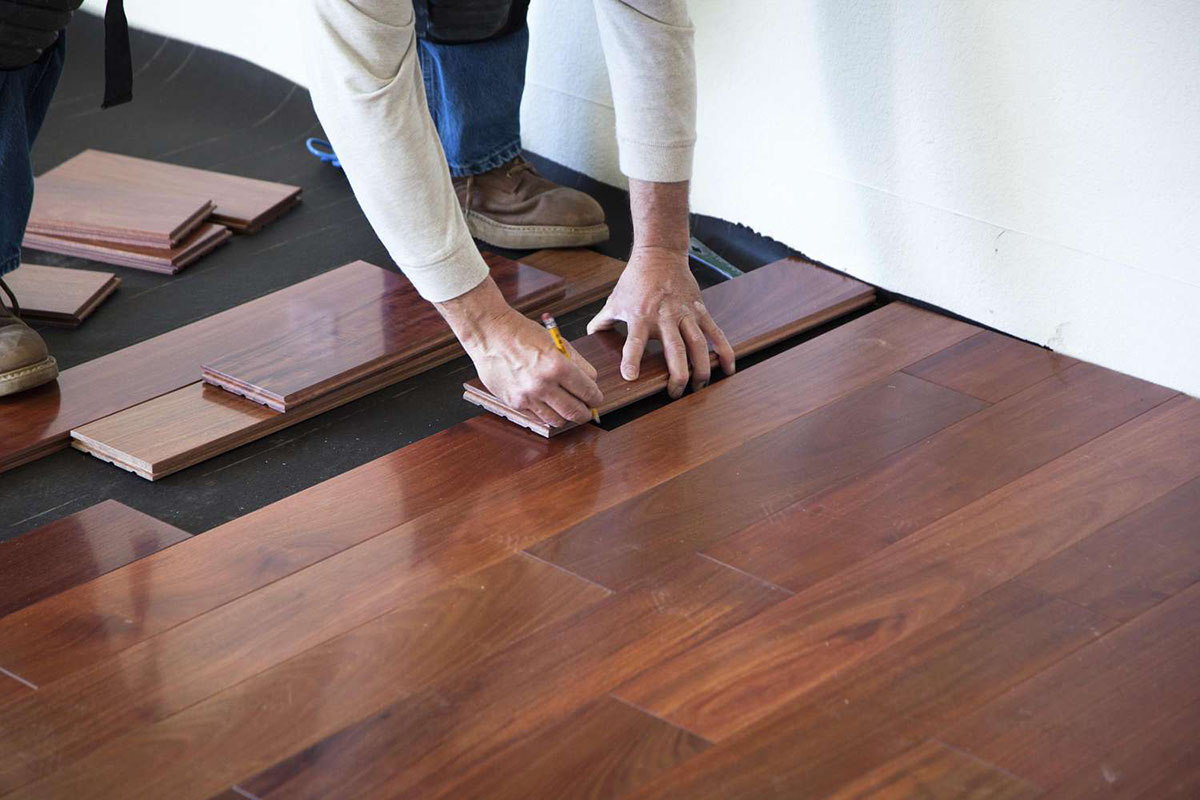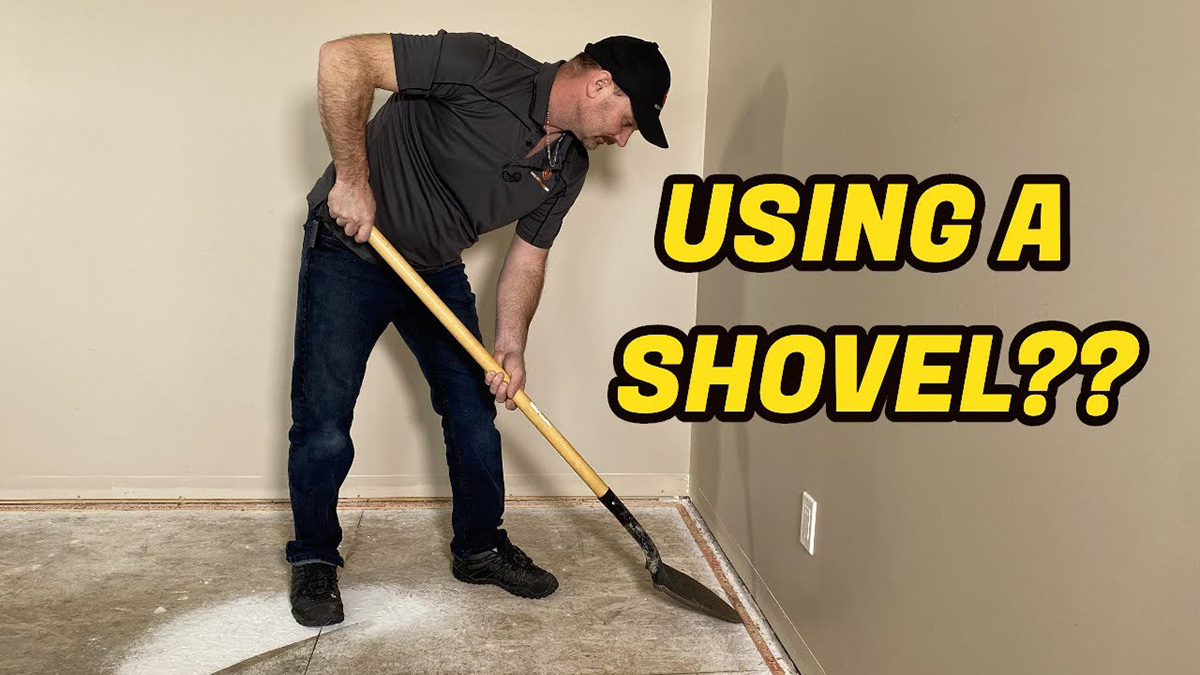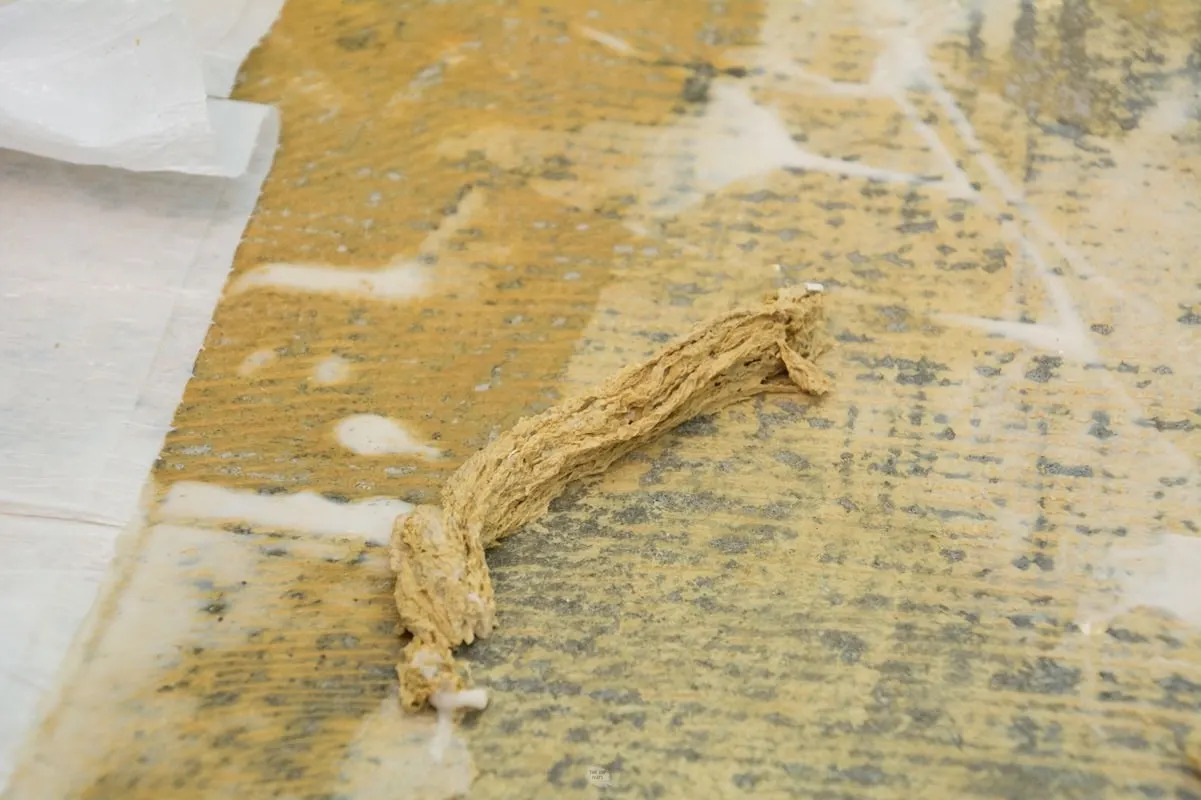

Articles
How To Remove A Carpet Adhesive
Modified: January 8, 2024
Learn effective methods for removing carpet adhesive with these informative articles. Say goodbye to stubborn residue and restore your floors to their original condition.
(Many of the links in this article redirect to a specific reviewed product. Your purchase of these products through affiliate links helps to generate commission for Storables.com, at no extra cost. Learn more)
Introduction
Carpet adhesive can be a stubborn and frustrating substance to remove. Whether you’re replacing your carpet or revamping your floors, getting rid of the adhesive residue is an essential step in the process. It’s important to approach this task with caution and follow the appropriate methods to avoid damaging the underlying surface.
In this article, we will guide you through the step-by-step process of removing carpet adhesive effectively and safely. We will explore various techniques, including using vinegar and water, heat, and solvents. By following these methods, you’ll be able to tackle the adhesive residue and restore your floors to their former glory.
Before diving into the methods, let’s take a closer look at what carpet adhesive is and the safety precautions you need to consider before starting the removal process.
Key Takeaways:
- Removing carpet adhesive requires caution, proper preparation, and the right techniques. Whether using vinegar and water, heat, or solvents, prioritize safety, test methods, and be patient for a successful outcome.
- After removing the adhesive, thorough cleaning and inspection are essential for a polished finish. Following the step-by-step process and taking necessary precautions will revitalize your floors effectively.
Read more: How To Remove Construction Adhesive
Understanding Carpet Adhesive
Carpet adhesive, also known as carpet glue, is a sticky substance used to secure carpets to the underlying floor surface. It is typically applied during carpet installation to ensure that the carpet stays in place and doesn’t shift or wrinkle over time.
Carpet adhesive is commonly made from synthetic materials such as latex or acrylic. It is designed to be strong and long-lasting, providing a secure bond between the carpet and the floor. However, over time, the adhesive can deteriorate, become brittle, or leave behind residue when the carpet is removed.
Carpet adhesive can be found in various forms, including liquid adhesives, adhesive-backed carpet tiles, and adhesive pads. The type of carpet adhesive used will depend on the specific installation method and the type of carpet being installed.
It’s important to note that different types of carpet adhesives may require different removal techniques. Some adhesives can be easily dissolved with water or solvents, while others may require heat application to soften them for removal.
Before proceeding with any adhesive removal method, it’s crucial to identify the type of adhesive used on your carpet. This information can typically be found from the manufacturer’s label on the adhesive container or by consulting with a professional. Understanding the type of adhesive will help you choose the appropriate method for removing it.
Now that we have a better grasp of what carpet adhesive is, let’s move on to the essential safety precautions you should take before starting the removal process.
Safety Precautions
Removing carpet adhesive can involve potentially hazardous substances and activities. It’s crucial to prioritize safety to protect yourself and minimize any potential risks. Here are some important safety precautions to keep in mind:
- Wear protective gear: Before you begin, make sure to wear the appropriate protective equipment, such as safety goggles, gloves, and a face mask. These will protect your eyes, skin, and respiratory system from any potential hazards.
- Ventilate the area: Adequate ventilation is essential when working with solvents or using heat to remove carpet adhesive. Open windows and doors or use fans to ensure proper airflow and minimize the inhalation of fumes.
- Read product labels: If you’re using solvents or cleaning agents, carefully read and follow the instructions and safety guidelines provided by the manufacturer. Some solvents may be flammable or have specific usage precautions that you need to be aware of.
- Work in a well-lit area: Ensuring proper lighting will help you see what you’re doing and prevent accidents. Use additional lighting sources if necessary to illuminate the work area.
- Avoid open flames: If you’re using heat to remove the adhesive, exercise caution and avoid open flames, such as candles or gas stoves, in the vicinity. Use heat guns or other approved heating tools instead.
- Keep children and pets away: To prevent accidents and exposure to hazardous materials, it’s best to keep children and pets out of the work area during the adhesive removal process.
- Dispose of waste properly: After completing the adhesive removal, dispose of any waste material, solvents, or cleaning agents according to local regulations. Do not pour solvents down drains or dispose of them in regular trash bins.
Remember, each adhesive removal method may have its specific safety considerations. Always review the instructions and safety guidelines for the specific technique you’re using and adhere to them diligently. Prioritizing safety will make the process smoother and protect your well-being.
With the necessary safety precautions in mind, let’s move on to preparing the area before starting the carpet adhesive removal process.
Preparing the Area
Before you start removing the carpet adhesive, it’s important to properly prepare the area to ensure a smooth and efficient process. Here are the steps to follow:
- Clear the space: Remove any furniture, rugs, or obstacles from the area where you’ll be working. This will give you a clear and open space to maneuver and access the adhesive.
- Protect surfaces: Cover any valuable or delicate surfaces, such as hardwood floors or countertops, with plastic sheets or drop cloths. This will shield them from potential damage caused by solvents or scraping tools.
- Remove loose debris: Sweep or vacuum the area to remove any loose dirt, dust, or debris. This will prevent them from interfering with the adhesive removal process and ensure a better bond between the adhesive and the removal method.
- Test a small area: Before applying any cleaning agents or heat, test your chosen adhesive removal method on a small, inconspicuous area of the carpet to ensure it doesn’t cause any damage or discoloration.
- Gather the necessary tools: Prepare the tools and equipment you’ll need for the adhesive removal process. This may include a scraper or putty knife, heat gun or hairdryer, solvents or cleaning agents, a bucket for water or vinegar solution, rags or towels, and a garbage bag for waste disposal.
By taking the time to properly prepare the area, you’ll create suitable conditions for a successful adhesive removal process. Now that everything is in place, let’s dive into the various methods to remove carpet adhesive, starting with the vinegar and water method.
Removing Carpet Adhesive Using Vinegar and Water
The vinegar and water method is one of the safest and most environmentally-friendly ways to remove carpet adhesive. Vinegar is a natural acid that helps break down the adhesive, making it easier to scrape off. Here’s how you can use this method:
- Mix the solution: In a bucket, combine equal parts white vinegar and warm water. This mixture will act as a mild solvent to dissolve the adhesive.
- Apply the solution: Use a sponge or cloth to saturate the adhesive with the vinegar and water solution. Make sure the adhesive is thoroughly dampened but not excessively soaked.
- Allow it to soak: Let the vinegar and water solution sit on the adhesive for about 10-15 minutes. This will give the solution enough time to penetrate the adhesive and break down its bond.
- Scrape off the adhesive: Use a scraper or putty knife to gently scrape away the softened adhesive. Start at the edges and work your way towards the center, applying gentle pressure to avoid damaging the underlying surface.
- Repeat if necessary: Depending on the thickness of the adhesive and its resistance, you may need to repeat the process multiple times. Apply more of the vinegar and water solution as needed and continue scraping until all the adhesive is removed.
After successfully removing the adhesive, wipe the area clean with a damp cloth or sponge to remove any remaining residue. Allow the surface to dry completely before proceeding to the next step.
Note: The vinegar and water method may not be suitable for all types of adhesives. It’s important to test the solution on a small, inconspicuous area of the carpet beforehand to ensure it doesn’t cause any damage or discoloration.
With the vinegar and water method complete, let’s explore another effective technique for removing carpet adhesive – the use of heat.
Use a heat gun or hairdryer to soften the adhesive, then scrape it off with a putty knife. Apply a solvent like acetone or adhesive remover to further dissolve the residue. Always test in a small, inconspicuous area first.
Read more: How To Remove Adhesive From Glass
Removing Carpet Adhesive Using Heat
Using heat is a popular method for removing carpet adhesive, especially when dealing with stubborn and dried-on residue. Heat helps soften the adhesive, making it easier to scrape off. Here’s how you can effectively remove carpet adhesive using heat:
- Preheat the surface: Before applying heat, warm up the adhesive by using a heat gun or a hairdryer set on high heat. Hold the heat source a few inches away from the adhesive and move it around in a circular motion to evenly distribute the heat.
- Test the temperature: After preheating the adhesive, test the temperature by touching it gently with your hand. It should feel warm, but not too hot to touch. Adjust the heat source accordingly to avoid damaging the surface or causing burns.
- Scrape off the adhesive: Once the adhesive is heated, use a scraper or putty knife to gently scrape off the softened adhesive. Start at the edges and work your way towards the center, applying steady pressure to remove the adhesive without damaging the underlying surface.
- Reapply heat as needed: If the adhesive starts to cool and harden while scraping, reapply heat to soften it again. Repeat the process until all the adhesive is removed.
It’s important to be cautious while working with heat. Avoid excessive heat or prolonged exposure to prevent damaging the carpet fibers or the surface beneath. Additionally, ensure proper ventilation to minimize the inhalation of fumes generated by the heat process.
Once the adhesive is removed, clean the area with a damp cloth or sponge to remove any residue. Allow the surface to dry completely before moving on to the next step.
Now that we’ve covered the vinegar and water method and the heat method, let’s explore an alternative approach using solvents to remove carpet adhesive.
Removing Carpet Adhesive Using Solvents
Solvents can be effective in breaking down stubborn carpet adhesive, making it easier to remove. However, it’s important to choose the right solvent that is compatible with your specific type of adhesive. Here’s a general approach to using solvents to remove carpet adhesive:
- Identify the adhesive: Determine the type of adhesive used on your carpet. This information can usually be found on the adhesive label or by consulting a professional.
- Select a compatible solvent: Choose a solvent that is appropriate for the adhesive type. Common solvents used for adhesive removal include mineral spirits, acetone, or specialized adhesive removers available in the market. Read the manufacturer’s instructions and safety guidelines carefully.
- Apply the solvent: Pour a small amount of the solvent onto a clean cloth or sponge. Gently dab or rub the solvent onto the adhesive, ensuring it is thoroughly saturated. Avoid excessive soaking, as it may affect the carpet backing or the underlying surface.
- Allow it to penetrate: Allow the solvent to sit on the adhesive for a few minutes, giving it time to dissolve and loosen the adhesive bond.
- Scrape off the adhesive: Using a scraper or putty knife, gently scrape away the softened adhesive. Start at the edges and work your way towards the center, applying moderate pressure to remove the adhesive without damaging the surface.
- Repeat if necessary: Depending on the thickness and stubbornness of the adhesive, you may need to repeat the process multiple times, reapplying the solvent as needed. Be patient and persistent until all the adhesive is removed.
After the adhesive is removed, clean the area with a damp cloth or sponge to eliminate any solvent residue. Allow the surface to dry completely before proceeding to the next step.
It’s important to note that solvents can emit strong fumes and may require additional safety precautions, such as proper ventilation and protective gear. Always follow the instructions and safety guidelines provided by the manufacturer when working with solvents.
With our solvent method explained, let’s move on to the next step of removing carpet adhesive – scraping off any residual adhesive.
Scraping Off Residual Adhesive
Even after using vinegar and water, heat, or solvents to remove the majority of the carpet adhesive, you may still be left with residual adhesive stuck to the surface. Scraping off this residue is crucial to ensure a clean and smooth finish. Here’s how you can effectively scrape off residual adhesive:
- Prepare the surface: Ensure that the surface is clean and dry before you start scraping off the residual adhesive. Remove any loose debris or remaining adhesive pieces.
- Select a scraping tool: Choose a scraper or putty knife that is suitable for the surface you are working on. A plastic scraper or a scraper with a rounded edge can help prevent scratches on delicate surfaces, while a metal scraper can be more effective on harder surfaces.
- Gently scrape the residue: Hold the scraper at a shallow angle and apply light pressure as you scrape along the surface, targeting the areas with residual adhesive. Work in small sections and be careful not to dig into or damage the underlying surface.
- Remove the scraped residue: After each scrape, wipe away the loosened adhesive residue with a clean cloth or paper towel. This will help you see the progress and prevent the residue from getting spread around.
- Continue scraping and wiping: Repeat the scraping process, focusing on one small section at a time. If the adhesive is particularly stubborn, you may need to reapply heat or solvent to soften it before continuing to scrape it off.
- Check for remaining residue: Once you’ve scraped off as much adhesive as possible, thoroughly inspect the surface to ensure there are no remaining glue residue. If there are, repeat the scraping and wiping process until the surface is free of adhesive.
Remember to take your time and be patient during the scraping process, as rushing or applying excessive force can damage the surface. Additionally, be cautious when scraping near edges or corners to avoid any accidental damage.
Once all the residual adhesive is removed, clean the area with a damp cloth or sponge and allow it to dry completely. At this point, you’re almost done with the adhesive removal process. Let’s move on to the final step – cleaning and finishing up.
Cleaning and Finishing Up
After successfully removing the carpet adhesive and scraping off any residual residue, it’s important to give the area a final cleaning to ensure a polished and smooth finish. Here are the steps to clean and finish up:
- Remove debris: Use a vacuum or broom to thoroughly clean the area, removing any loose dirt, dust, or adhesive particles that may have been left behind.
- Prepare a cleaning solution: In a bucket, mix a mild detergent or floor cleaner with warm water. Follow the instructions on the cleaning product for the appropriate dilution ratio.
- Clean the surface: Dip a clean cloth or mop into the cleaning solution and wring out any excess liquid. Gently scrub the surface, focusing on the areas where the adhesive was removed. Rinse the cloth or mop frequently in clean water to avoid spreading any residue.
- Rinse the area: Once the surface is clean, rinse it thoroughly with clean water to remove any soap or cleaning product residue. This will help prevent any sticky or slippery residue from forming.
- Dry the area: Use a clean towel or allow the surface to air dry completely. Ensure that the area is completely dry before placing any furniture or rugs back in the space.
- Inspect the results: Take a close look at the cleaned surface to ensure that all adhesive residue has been removed. If you notice any remaining residue or stubborn spots, repeat the cleaning process or consider using a specialized adhesive remover.
Once you’re satisfied with the cleanliness of the surface, you’re ready to move forward with your desired flooring option or continue with your renovation plans.
Remember, each adhesive removal process may have specific recommendations for cleaning and finishing. Always refer to the instructions and guidelines provided by the manufacturer of the adhesive remover or cleaning products you’re using.
Congratulations! You have successfully learned how to remove carpet adhesive and achieve a clean and adhesive-free surface. By following the proper techniques and taking the necessary precautions, you have taken a significant step towards revitalizing your floors and creating a fresh and welcoming space.
Good luck with your flooring project, and enjoy your newly transformed area!
Disclaimer: The information provided in this article is for guidance purposes only. Always consult with professionals and follow proper safety guidelines when dealing with adhesive removal and related tasks.
Read more: How To Remove Adhesive From A Bathtub
Conclusion
Removing carpet adhesive can be a challenging task, but with the right methods and precautions, it is entirely achievable. Whether you choose to use vinegar and water, heat, or solvents, following the step-by-step instructions and taking safety measures will help you successfully remove the adhesive and restore your floors to their former glory.
Throughout this article, we discussed various techniques for removing carpet adhesive and provided insights into understanding the nature of carpet adhesive, safety precautions, preparing the area, and the step-by-step processes for using vinegar and water, heat, solvents, scraping off residual adhesive, and cleaning and finishing up.
Remember, it’s crucial to identify the type of adhesive used on your carpet and carefully choose the appropriate removal method. Testing a small area before proceeding is also essential to avoid any potential damage or discoloration.
While adhesive removal can be a time-consuming process, the results are well worth the effort. By taking the time to properly prepare the area, using the right techniques, and ensuring a thorough cleaning, you will achieve a smooth and adhesive-free surface ready for your next flooring project.
Always prioritize safety throughout the process by wearing protective gear, ensuring proper ventilation, and following the instructions and guidelines provided by the manufacturers. Take your time, be patient, and practice caution to minimize any potential risks.
Now that you have the knowledge and tools to tackle carpet adhesive removal, you can confidently transform your space and enjoy the benefits of clean and beautiful floors.
Good luck with your adhesive removal journey, and may your floors shine bright once again!
Frequently Asked Questions about How To Remove A Carpet Adhesive
Was this page helpful?
At Storables.com, we guarantee accurate and reliable information. Our content, validated by Expert Board Contributors, is crafted following stringent Editorial Policies. We're committed to providing you with well-researched, expert-backed insights for all your informational needs.
